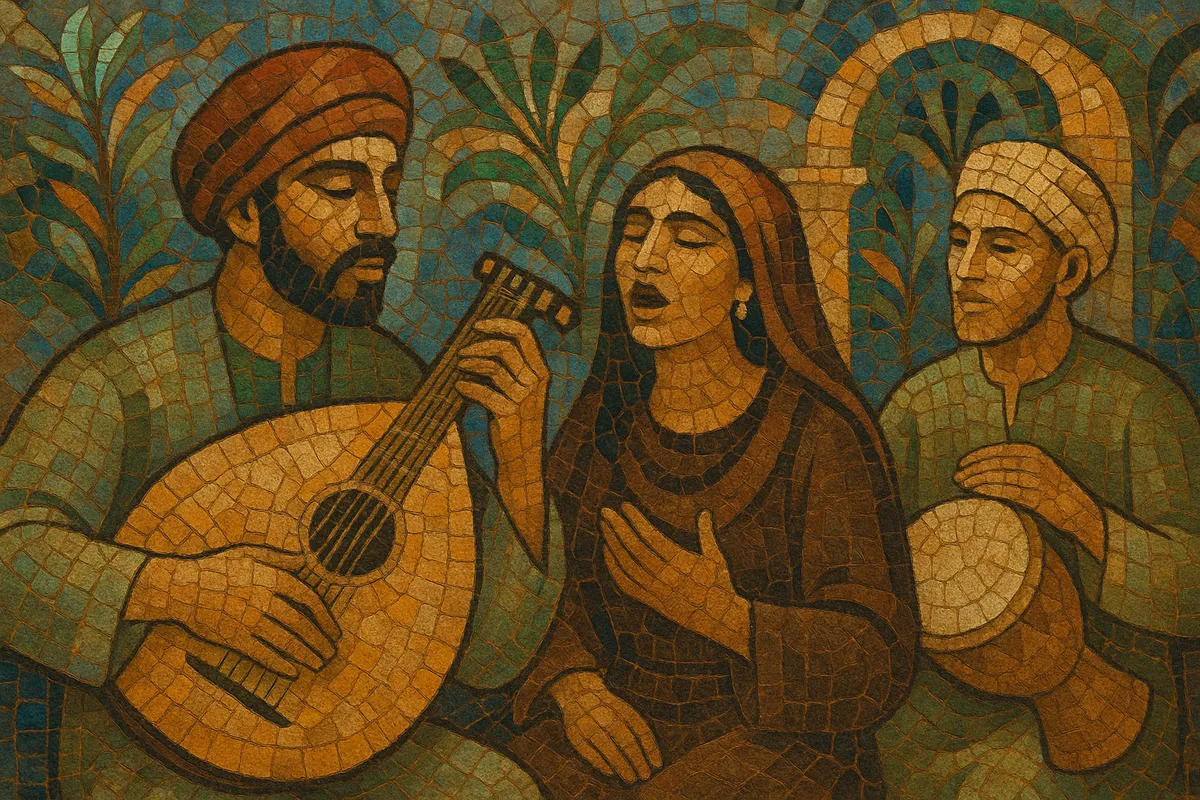Arabic folk music is an umbrella for the rural and community-based song, dance, and instrumental traditions of Arabic-speaking societies across North Africa, the Levant, the Arabian Peninsula, and the Nile Valley.
It centers on modal melodies (maqām), cyclical rhythms (īqāʿāt), and expressive vocalism (mawwāl, zajal, layālī) delivered with microtonal ornamentation and call-and-response refrains. Typical instruments include the oud, qanun, nay, rabab, simsimiyya, mijwiz, kawala, mizmar/zoorna, and an array of frame and goblet drums (riqq, daff, tabla/darbuka). While strongly local and vernacular, these styles have long interacted with courtly/classical practices, Sufi devotional repertoires, and festive dance forms, producing regionally distinct idioms such as Saʿīdi tunes in Upper Egypt, Bedouin songs of the Arabian deserts, Levantine dabke songs, and Maghrebi folk repertories.
Today, Arabic folk persists in weddings, seasonal festivities, processions, work songs, and community performance, and it continues to supply rhythms, modes, and stories to modern pop, shaabi, and diasporic fusions.
Arabic folk music grew from pre-Islamic poetic song and communal music-making, then expanded across the early Islamic centuries as Arabic language and culture spread. The shared modal (maqām) and rhythmic (īqāʿ) frameworks co-evolved with courtly and liturgical traditions, yet village and Bedouin communities preserved distinct repertoires for work, weddings, mourning, and dance. Instruments such as the oud, rabab, and frame drums underpinned these practices, while extemporized vocalism (mawwāl, layālī) carried local dialects and oral poetry.
Centuries of cultural exchange—Berber/Amazigh in the Maghreb, Andalusian legacies in North Africa, Ottoman influence in the Levant, Nubian traditions along the Nile, and Bedouin practices in the Arabian Peninsula—produced region-specific sounds. Examples include Saʿīdi and Fellahi styles in Egypt, dabke songs in Greater Syria, ʿarūbi and gnawa-inflected folk in the Maghreb, sea-related songs in Gulf ports, and pastoral Bedouin chants and flute tunes. Festivals, market-days, and Sufi gatherings (hadra, zikr) kept repertoires alive and connected them to communal life.
With the rise of recording, radio, and urban stages (Cairo, Beirut, Damascus, Casablanca), folk performers and ensembles brought village idioms to city audiences. National troupes and folklore ensembles codified regional dances and songs for theaters and state media. Urban popular styles like shaabi and early Arabic pop drew heavily on folk rhythms (maqsūm, baladī, saʿīdi) and melodic gestures, while protest and socially conscious songwriters reworked folk modes for modern themes.
Today, community-based musicians, heritage ensembles, and independent artists sustain folk lineages, often blending them with jazz, rock, electronic, and hip-hop. Diasporic scenes circulate folk grooves and maqām-based hooks globally, while weddings and neighborhood celebrations remain vital sites of transmission. Arabic folk continues to shape regional pop, dance music, and neighboring traditions (Mizrahi, raï, taarab), ensuring its modal language and storytelling remain culturally central.


